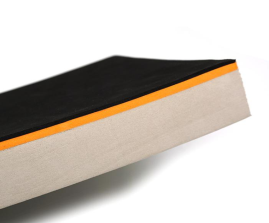
EVA (Ethylene Vinyl Acetate) is a type of foam material commonly used in various applications, including footwear, padding, and packaging. The hardness or durometer of EVA foam can vary, and each hardness level serves different functions. Here are some general functions of EVA foam with different hardness levels:
1. Soft/low hardness EVA foam
Soft EVA foam with a low hardness level provides excellent cushioning and impact absorption. It is commonly used in applications where comfort and shock absorption are paramount, such as insoles, orthotics, and cushioning materials for footwear and sports equipment.
2. Medium hardness EVA foam
EVA foam with a medium hardness level offers a balance between cushioning and support. It provides moderate shock absorption and is often used in midsoles of athletic shoes, protective padding for sports gear, and general-purpose cushioning applications.
3. Firm/high hardness EVA foam
Firm EVA foam with a high hardness level offers greater stability and support. It provides minimal compression and is suitable for applications that require rigidity. Such as outsoles of shoes, industrial gaskets, and structural components.
The specific hardness of EVA foam can be measured using a durometer scale, usually expressed as Shore A or Shore C hardness. The choice of EVA foam hardness depends on the desired function, intended application, and the level of support or cushioning required.
It’s important to note that these are general guidelines, and the specific functions of EVA foam with different hardness levels can vary based on the manufacturer’s formulation and design.
More materials can be found here: https://www.eva-block.com/products/.

